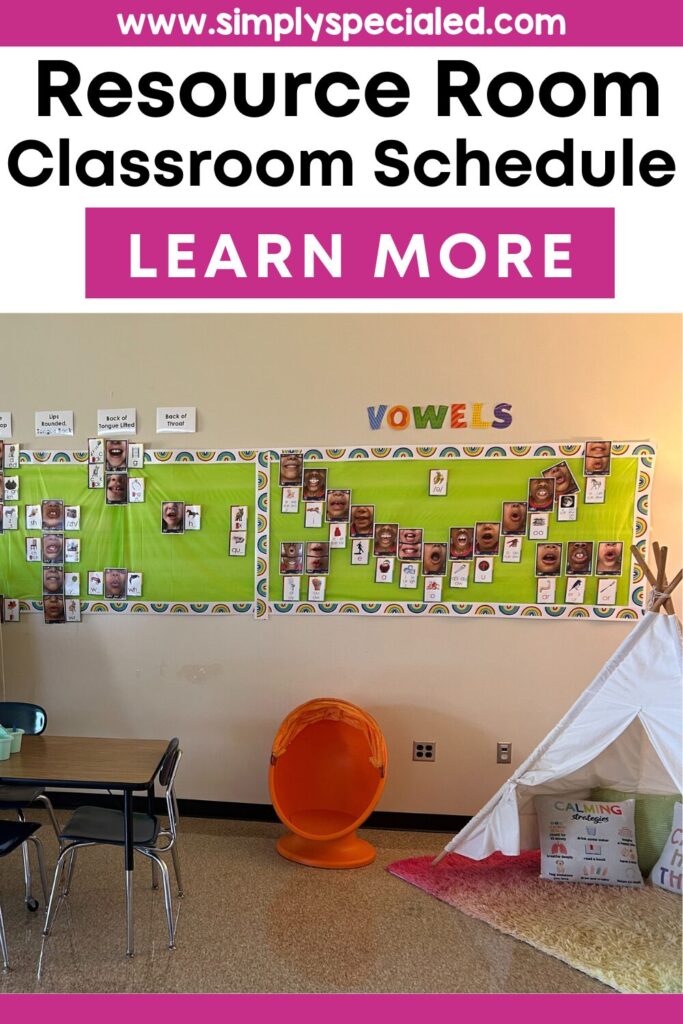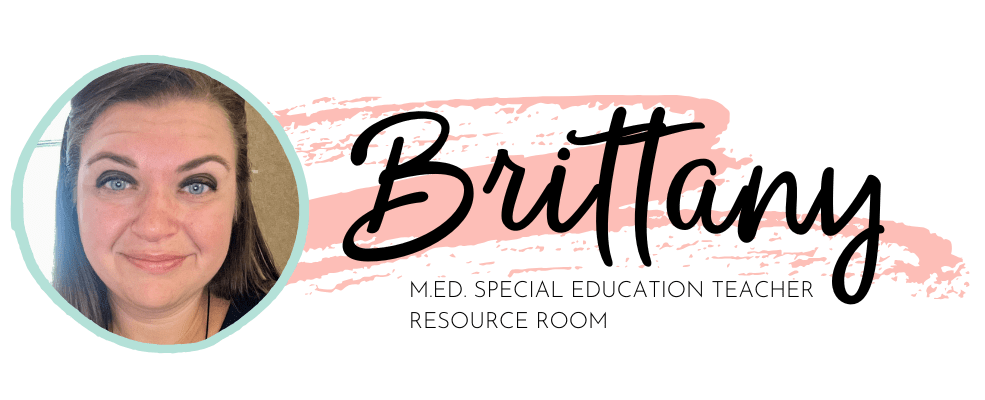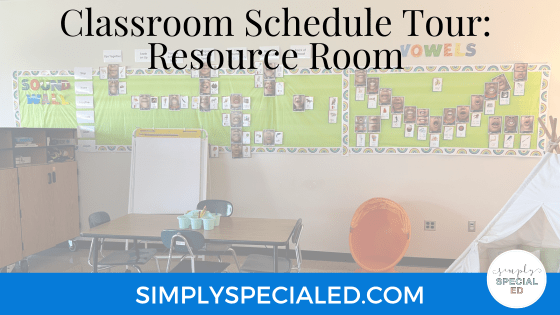
Welcome!!
If you’ve ever wondered what a day in a resource room looks like, let me give you a little tour of how our schedule flows. My classroom is set up as a space where students come and go throughout the day for individualized support. Each child’s schedule looks a little different because their services are based on their IEP goals, but the meat and potatoes of our day is all about meeting students where they are. This looks different in each school and classroom you enter. It’s a bit challenging to find the groove and figure out how to collaborate effectively with classroom teachers, but it is certainly rewarding!


The Reality of Scheduling
While I would love to give a beautifully organized schedule as shown above, it is very difficult to do when students are coming and going all day. Let me get a little into what the make-up of our class looks like first. In our school, we have two Exceptional Children’s (EC) teachers. We are the dream team who works with our students who need some extra support. Between the two of us, we serve close to 40 of our special education students. We have divided up our caseload based on the level of needs. I serve the students with the highest level of needs, which in turn, means the students with the highest amount of pull out time. That makes having a smooth flowing schedule even more challenging. But hey, who doesn’t love a good challenge?
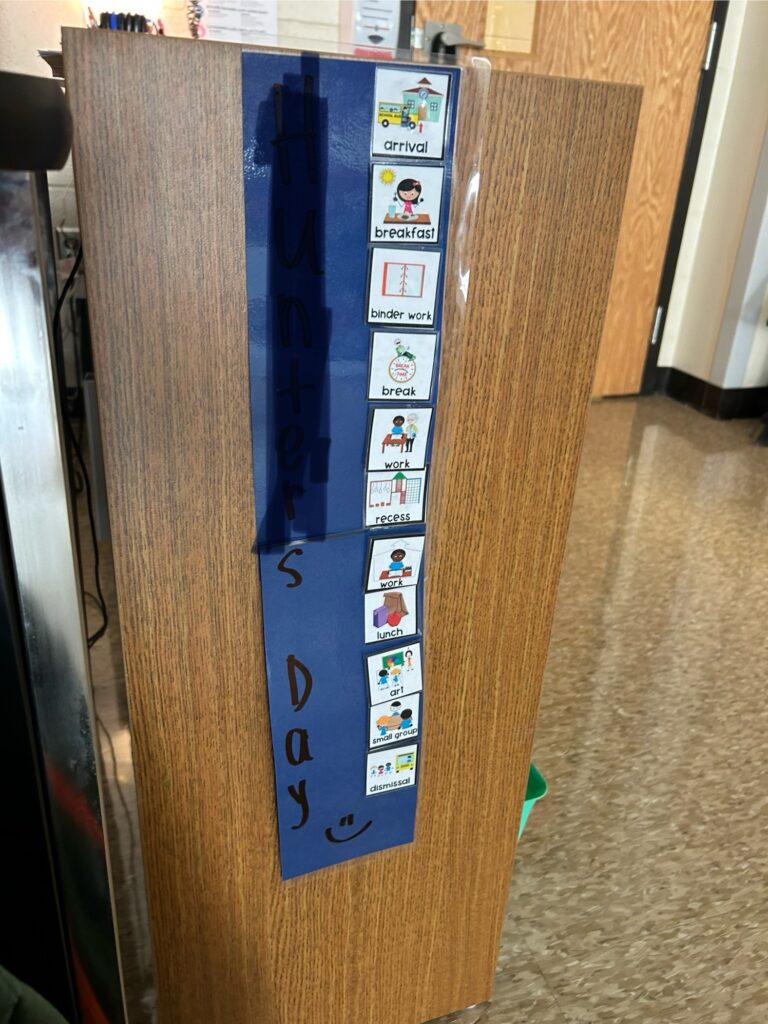

My Caseload Snapshot
My caseload consists of eleven students. I serve five kindergarteners, one second grader, two third graders and three fourth graders. My students are classified as developmentally delayed, autistic, learning disabled and OH (other health impairments, usually involving a medical diagnosis). Talk about a wide range of student levels! We have some students who are very low, cognitively, some behavioral students, and students who just struggle overall. I did say I love a good challenge, right?
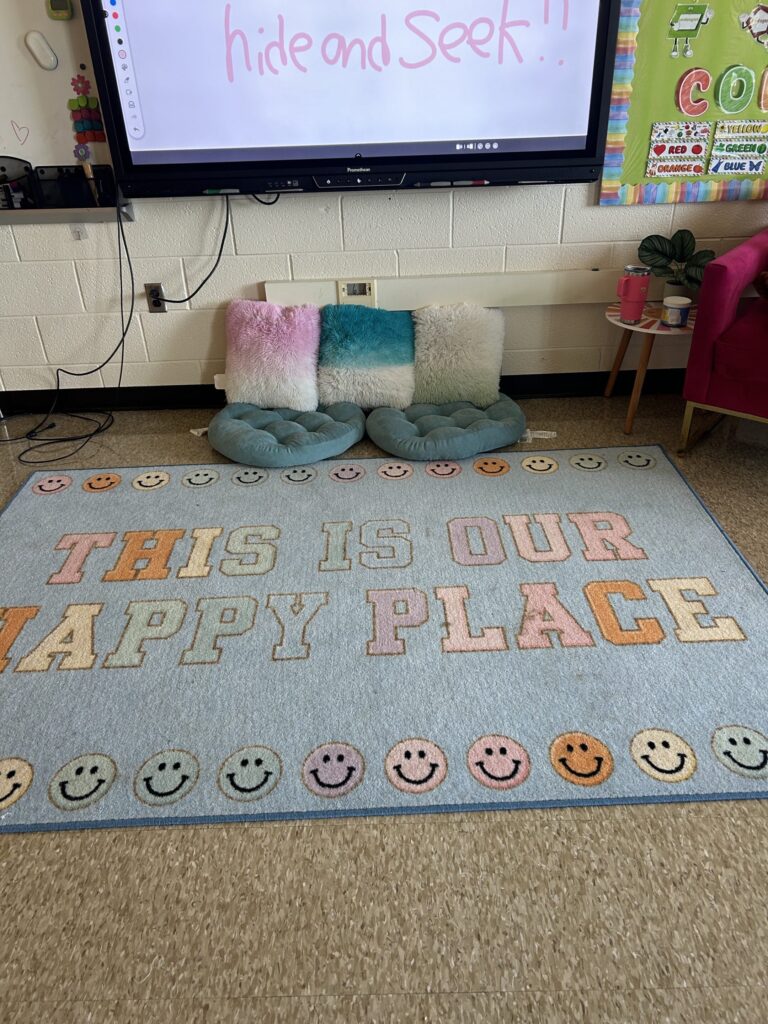

Transitioning
So when students come into the resource room, we start by setting the tone. Some friends transition better with a calm activity, such as a quick check-in, a movement break, or simply a moment to settle in. Others are ready to jump straight into learning. I like to give them that choice when possible so they feel ownership of their time here, and it helps decrease transitional anxiety. Does it always work? No. But when we get into the routine and students know the expectations, it certainly helps!


The Power of Visuals
Some students, especially our AU babies, really thrive when visuals are available for use. One visual we use in particular is the First-Then board. By providing these visuals and giving students the opportunity to know what is coming next, it really helps to create consistency and helps to ease the unknown, which we know can be scary for some students. When we establish the expectations and routines and make them visually available, it makes everyone’s life easier! Here’s an awesome First-Then Board and other visuals to take a look at!
Targeted Instruction
From there, we dive into targeted instruction. Most students come to me for reading where we’re working Targeting IEP goals. We work on letter sounds, blending, or comprehension, just to name a few. Others are here for math where we practice number sense, problem solving, or strategies for addition and subtraction. We also work on number recognition and 1:1 correspondence for our littles. Writing time is another big one, whether it’s learning to form letters, stretch out words, or build complete sentences. Each student’s goals guide what we work on, and I pull resources, visuals, and activities that match their level. One resource that has been very helpful is this morning work bundle.
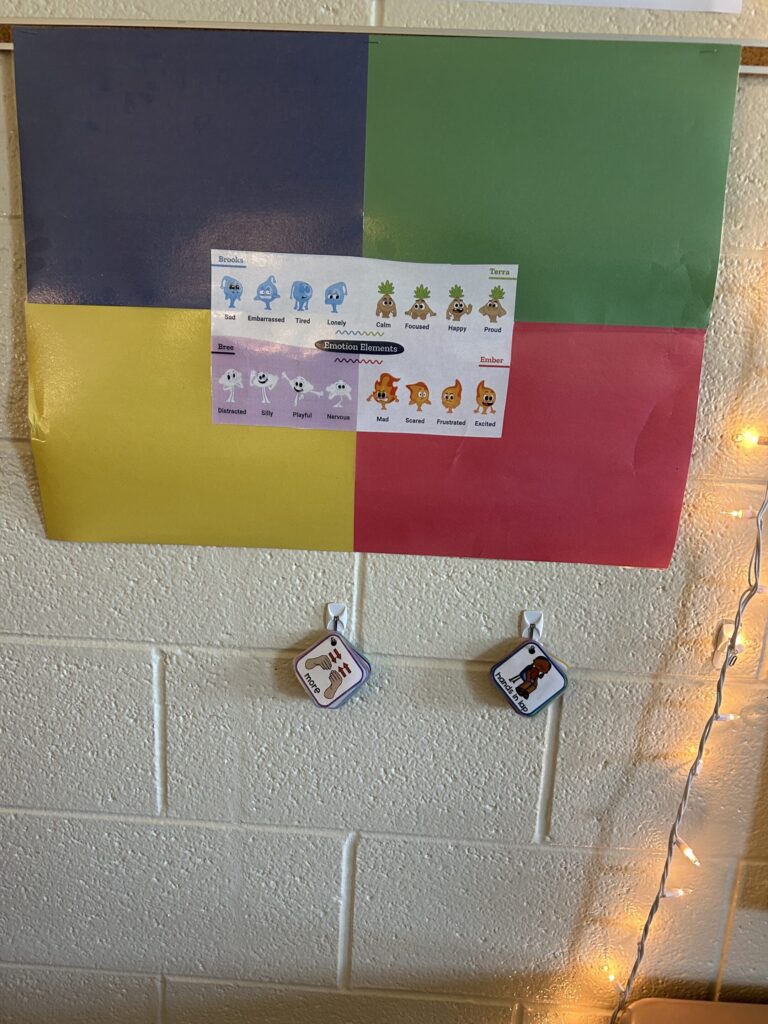

Social-Emotional & Adaptive Skills
We also carve out time for social-emotional learning and behavior skills. Most of our students have goals in these areas on their IEP. This often looks like practicing taking turns in a game, role-playing how to handle frustration, or learning how to ask for help in an appropriate way. For some of my students, adaptive skills are a focus too. If you are wondering what adaptive skills look like in the general education setting, this includes skills like following routines, managing materials, or building independence in daily tasks. These may seem small, but they make such a huge difference in how confident and successful kids feel in the classroom and throughout the school environment.
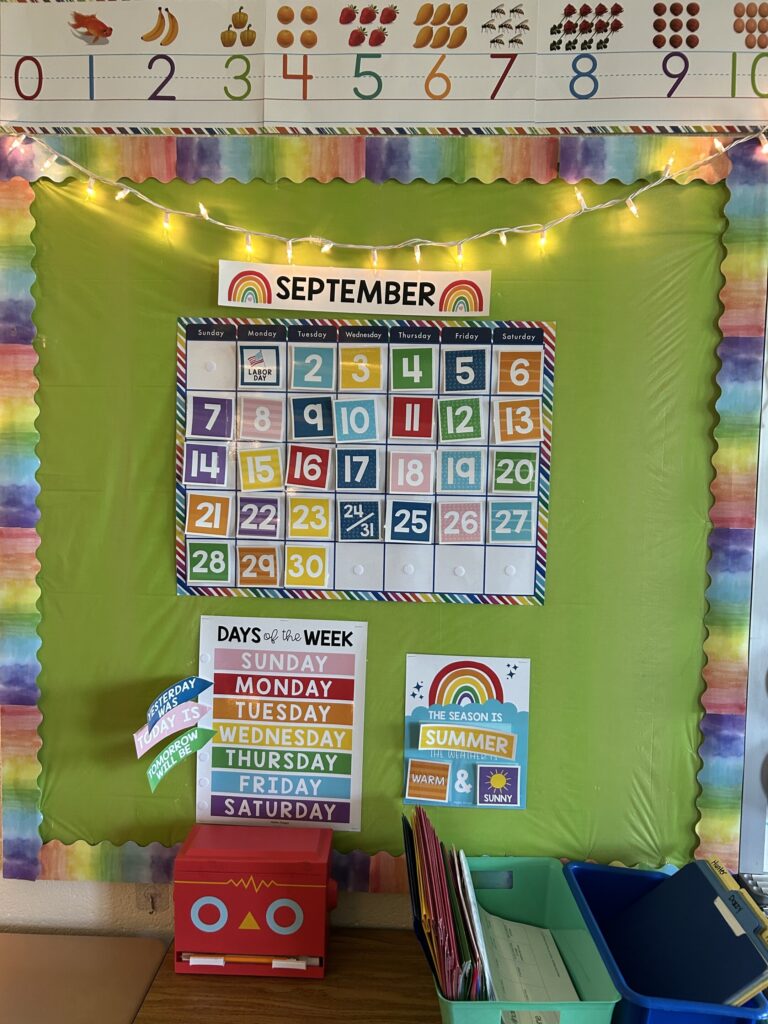

The Puzzle of the Resource Room
Because my students are pulled at different times of the day, I think of our schedule as a puzzle. Each piece is unique, but when it all comes together, it creates a day full of growth opportunities. No two days are ever exactly the same, and honestly, that’s what makes the resource room so special. Every student’s journey is personal, and I love that I get to walk alongside them, celebrating progress (big or small) every step of the way.
Thanks for reading!! I hope sharing some of my struggles helps you feel better about the craziness of managing a resource schedule. Want some more ideas? Here are some different ways to prep schedules!
